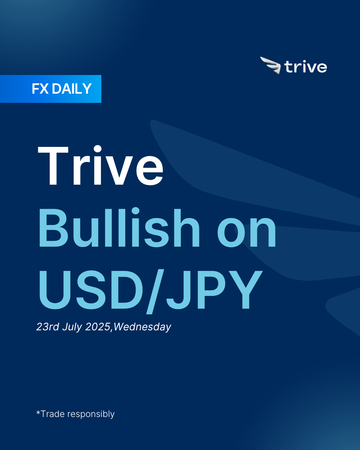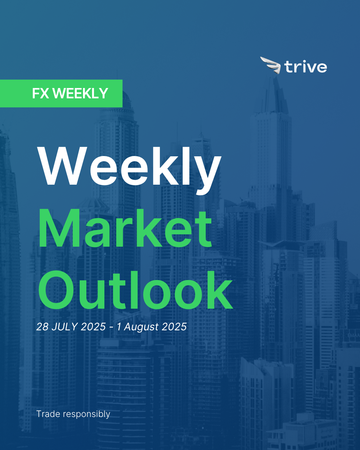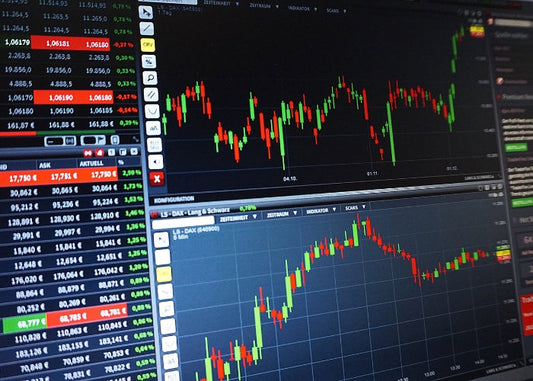FX Daily: Trive Bearish on USD/CHF

The CHF remains a defensive currency but has recently underperformed as a safe-haven relative to the Japanese Yen. Despite rising Swiss sight deposits signaling steady demand for capital safety, CHF lacks the yield appeal of JPY or USD. USD/CHF climbed on broad USD strength but failed to hold highs amid political jitters in the U.S. With no major CHF catalysts ahead, the pair is vulnerable to USD softness, especially if Fed credibility and global tariffs concerns deepen.
CHF: Safe-heaven currency
The Swiss Franc spent the week moving largely in response to global market developments, with its direction mostly shaped by the swings in the US dollar. The Franc weakened through much of the week, with USD/CHF climbing toward the 0.8050 level as dollar strength dominated. One of the key themes was the Franc’s underperformance as a safe-haven currency compared to the Japanese Yen during the political turbulence in the US mid-week. Although rising Swiss sight deposits indicated steady demand for the Franc as a stable place to hold cash, its zero-yield nature made it less attractive than other haven currencies in a risk-off environment.
The contrast between the Franc and the Yen became most visible on Wednesday during the sharp risk-off move that followed rumors President Trump might fire Fed Chair Jerome Powell. While both CHF and JPY are considered safe havens, investors clearly favored the Yen. The main reason for this preference was the difference in interest rates. The Bank of Japan’s policy rate of 0.5% provided a small positive yield, making it more appealing than the Swiss National Bank’s 0% rate. As a result, USD/JPY fell more sharply than USD/CHF rose, underscoring the Franc’s relative weakness.
On the domestic side, Swiss sight deposit data released Monday showed that total deposits at the SNB rose to CHF 464.1 billion, the highest since October 2023. This increase suggests that foreign investors are moving cash into Swiss accounts to escape negative rates elsewhere, taking advantage of the SNB’s zero-interest policy. It also reflects continued demand for the Franc as a reliable store of value.
In terms of policy, the SNB is widely expected to remain on hold. Following its recent rate cut, market pricing now reflects only about 9 to 11 basis points of further easing by the end of the year, reinforcing the idea that the central bank will stay on pause for the time being.
Overall, the Franc’s movement mirrored the dollar. It weakened early in the week when the US dollar surged on the back of tariff threats and a strong CPI print. Later in the week, it recovered some ground as the dollar softened following the political drama involving the Fed and dovish comments from Governor Waller.
The Swiss Franc mirrored the USD last week, weakening when the dollar strengthened and recovering slightly as the dollar softened. With no major events ahead for CHF, we expect this dynamic to continue in the coming week. The outlook remains broadly neutral, CHF is likely to perform well if the USD weakens and underperform if the USD strengthens.
USD: Limited bounce
The US Dollar had a turbulent week, caught between growing signs of tariff-driven inflation and a dramatic political standoff over the Federal Reserve’s independence. The DXY index started the week strong, continuing its previous momentum as President Trump threatened to impose 30% tariffs on the EU and Mexico. Mid-week, the dollar gained further strength following a higher-than-expected US CPI report, but that momentum was cut short by rumors that President Trump was preparing to fire Fed Chair Jerome Powell. Although the President quickly denied the claim, which helped reverse the sharpest market reactions, the situation exposed serious tensions around monetary policy. The dollar still ended the week higher, but with added political risk in the background.
Early in the week, inflation data gave mixed signals. Tuesday’s June CPI report triggered a hawkish reaction as Core Goods CPI rose 0.7%, its fastest monthly pace in nearly two years, suggesting that tariff costs were starting to show up in consumer prices. But the following day, the Producer Price Index came in softer than expected, with the core monthly figure flat. This helped cool immediate concerns about inflation, and analysts lowered their forecasts for the Fed’s preferred gauge, Core PCE.
On Thursday, strong economic data pointed to a resilient consumer. June Retail Sales came in well above expectations, rising 0.6% compared to the 0.1% forecast, and jobless claims fell unexpectedly. However, Friday’s University of Michigan survey showed that while consumer sentiment improved, inflation expectations dropped noticeably. Business inventories in May remained flat, suggesting lukewarm momentum on the business side.
The most dramatic development came on Wednesday with reports that President Trump was considering firing Fed Chair Jerome Powell. Markets reacted strongly, with the dollar falling and bond yields dropping on fears that the Fed’s independence was at risk. Although Trump later said it was “highly unlikely” he would actually fire Powell, he also reiterated his wish to appoint someone new when Powell’s term ends. The initial shock quickly faded, but the episode left markets unsettled.
Meanwhile, comments from Fed officials showed growing division within the central bank. Governors Lisa Cook, Michelle Bowman, and Philip Jefferson, along with regional Fed presidents like Loretta Mester, supported a patient and data-driven approach. They pointed to the solid economy and the temporary nature of tariff-related inflation as reasons not to rush into rate cuts. On the other hand, Governor Christopher Waller strongly advocated for a 25 basis point cut in July, arguing the Fed should act early to prevent economic risks from escalating and could ignore short-term tariff inflation.
Market pricing for Fed rate cuts moved up and down all week. After the hot CPI print, expectations for year-end cuts dropped below 45 basis points. The Powell rumors temporarily increased bets on more easing, but by the end of the week, markets were pricing in around 46 basis points of cuts by December. A move in July looked unlikely, but a cut by September remained a focus.
In the geopolitical front, tariffs dominated headlines. President Trump opened the week by threatening 30% tariffs on the EU and Mexico and 100% tariffs on Russia if a peace deal in Ukraine isn’t reached within 50 days. While the extended deadline on Russia was seen as a sign of de-escalation, the EU threat added tension to ongoing trade talks. Negotiations between US and EU officials continued all week but turned sour on Friday amid reports that Trump was demanding a minimum 15–20% tariff on all EU goods and rejected the idea of lowering existing tariffs on cars.
There was also a thaw in US-China relations, as the US approved some Nvidia H20 AI chip sales to China. Commerce Secretary Howard Lutnick linked the move to broader talks over rare earth materials.
Market sentiment shifted throughout the week. Early fears of rising inflation gave way to concerns about political risk and the independence of the Fed. The DXY index reached a high of 98.95 on Thursday, its strongest level since late June, supported by solid data. But it lost momentum after the Powell rumors and dovish comments from Governor Waller, finishing the week up around 0.6% but off its highs. The US Treasury yield curve steepened sharply on Wednesday as markets considered the possibility of a more dovish replacement for Powell, although that move mostly reversed after Trump’s denial.
In the near term, the USD may hold its ground or even extend gains, supported by a resilient US economy, consumer confidence has been rising since May, PMIs remain in expansion, unemployment is stable, and inflation remains sticky .. leaving the Fed in no rush to cut rates.
While markets are watching the potential for a change in Fed leadership, with some concern that a Trump aligned chair could weigh on the dollar, we believe the president’s influence over monetary policy would remain limited. As a result, we don’t view the uncertainty around Powell’s future as a high probability trigger for a sharp, sustained USD selloff.
That said, we maintain a bearish longer-term view, as most G10 currencies have outperformed the dollar year to date beyond what short-term fundamentals would justify, with portfolio flows becoming a dominant force. Europe, in particular, has benefited from reallocations away from US assets, and flows have recently explained more of the EUR/USD move than traditional cyclical factors. Unless new catalysts like deeper or earlier Fed cuts emerge, dollar depreciation may slow from here, but the broader trend still points to weakness as global investors continue to reduce their US exposure.

USD/CHF 4H
Disclaimer
This material is provided for informational purposes only and does not constitute financial, investment, or other advice. The opinions expressed in this material are those of the author and do not necessarily reflect the views of Trive International. No opinion contained in this material constitutes a recommendation by Trive International or its author regarding any particular investment, transaction, or investment strategy. This material should not be relied upon in making any investment decision.
The information provided does not consider the individual investment objectives, financial situation, or needs of any specific investor. Investors should seek independent financial advice tailored to their individual circumstances before making any investment decisions. Trive International shall not be liable for any loss, damage, or injury arising directly or indirectly from the use of this information or from any action or decision taken as a result of using this material.
Trive International may or may not have a financial interest in the companies or securities mentioned. The value of investments may fluctuate, and investors may not get back the amount they originally invested. Past performance is not indicative of future results.
For more information about Trive International, please visit http://trive.com/int
Additional Information
Investing involves risk, including the potential loss of principal. Diversification and asset allocation strategies do not ensure a profit or guarantee against loss. The content in this material is subject to change without notice and may become outdated or inaccurate over time. Trive International does not undertake any obligation to update the information in this material.
By accessing this material, you acknowledge and agree to the terms of this disclaimer. If you do not agree with these terms, please refrain from using this information.
No comments
Home
Trive
TriveHub





0 comments